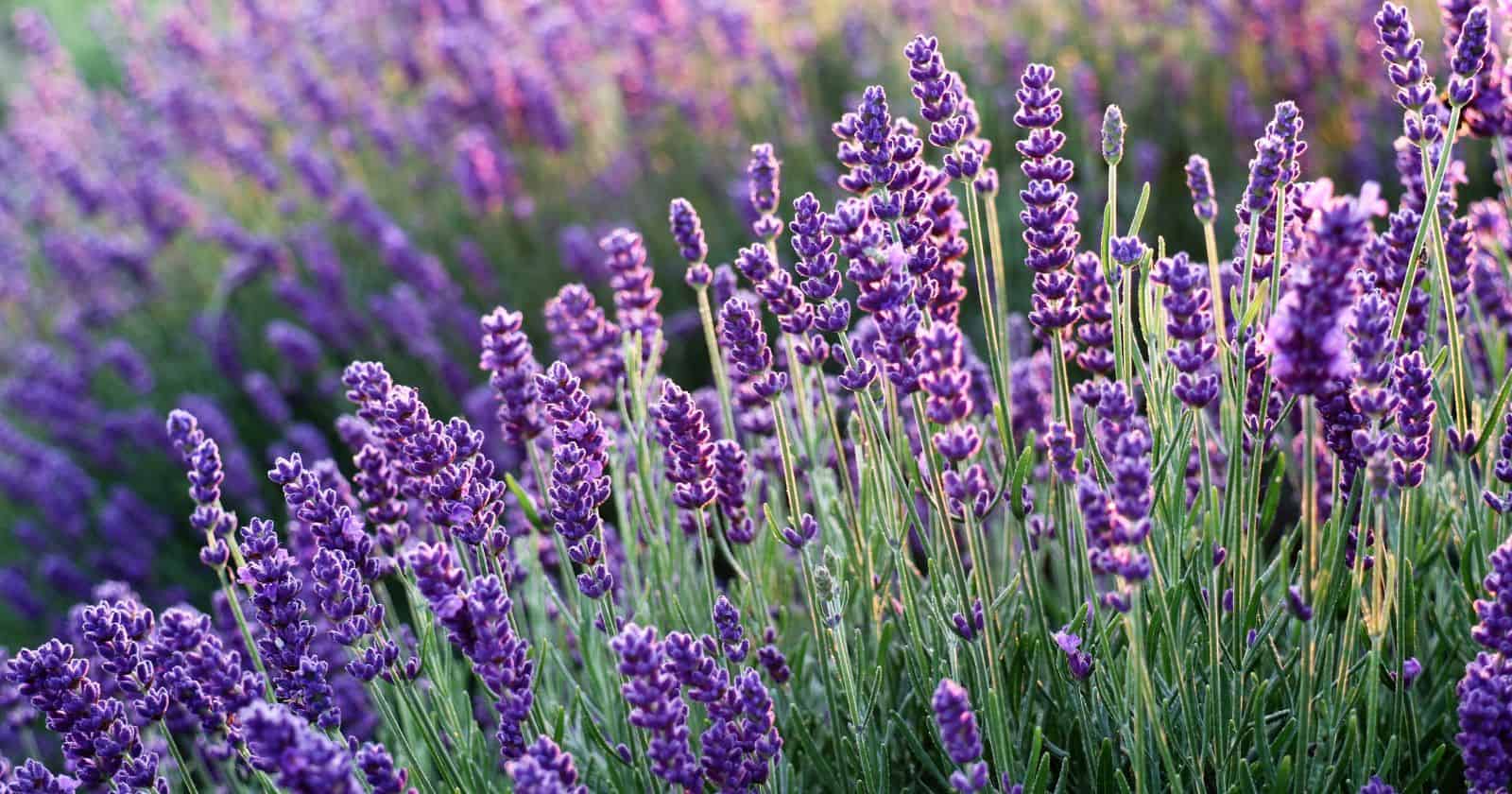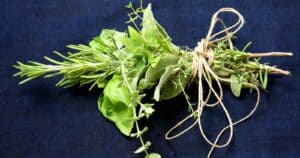“Transform your garden, soothe your soul, and heal your body with lavender – the power herb!” Are you seeking a natural solution to ease stress, chronic pain, high blood pressure, or asthma?
The ultimate guide to growing and using lavender can be the perfect remedy.
Lavender is a fragrant flowering plant, known for its rich history of medicinal properties and aromatherapy uses. This blog post will cover everything you need about growing and using lavender. From planting tips, caring, and harvesting to making lavender oil, soap, and tea – we’ve got you covered!
In the following sections, we’ll explore the wide varieties of lavender, their benefits, and how to cultivate and care for this versatile herb.
We’ll also explain the science behind lavender’s therapeutic effects on the body and mind. Lastly, we’ll show you how to make different lavender products, such as essential oil, soaps, tea, and much more.
So, whether you’re a seasoned gardener or a newbie, this guide will give you all the tools you need to grow and use lavender effectively. Let’s dive in!
The History and Benefits of Lavender
The history of lavender dates back to ancient times, with the Greeks and Romans using it for various purposes, such as bathing, bedding, and antiseptic properties for wound care. Lavender was also believed to have aphrodisiac properties and was used to keep the wearer chaste.
Today, lavender has numerous benefits, such as reducing anxiety and stress, promoting relaxation, pain relief, skin health, and insect repellent.
Lavender has been found to have various health benefits:
- Promotes relaxation and sleep: Lavender’s scent calms the mind and promotes sleep. Studies have shown that inhaling lavender before bedtime can improve sleep quality and duration.
- Reduces anxiety and stress: Lavender is a natural stress reliever that calms the body. Its scent has been found to reduce anxiety levels significantly.
- Relieves pain: Lavender has analgesic properties and can help relieve pain. It can be used to ease headaches, toothaches, and muscle pains.
- Improves skin health: Lavender oil has antimicrobial and anti-inflammatory properties that make it practical for treating various skin conditions such as acne, eczema, and psoriasis.
- Repels insects: The strong scent of lavender can repel insects such as mosquitoes and moths, making it an effective natural insect repellent.
In addition to its health benefits, lavender is used in aromatherapy, perfumes, and cosmetics. Its soothing scent makes it popular in candles, soaps, and lotions.
Growing and Planting Lavender
Growing and planting lavender is an enjoyable activity that can provide your garden with a burst of color and a relaxing aroma.
The first step to successfully growing lavender is choosing a sunny location with well-drained soil. Lavender plants prefer soil with a pH level between 6.7 to 7.3 and should be spaced 12 to 18 inches apart.
Before planting, it’s recommended to amend the native soil with organic matter such as compost to improve soil quality. It is pruning the lavender plant when planting encourages branching and should be repeated yearly.
Providing the necessary conditions is essential to ensure the proper growth of lavender. Lavender tolerates different growing conditions, but they thrive best under warm, sunny weather conditions.
Additionally, they require well-drained soil, and watering should be done moderately. When planting lavender, select the appropriate variety for your location, including English, Spanish, and French.
Lavender plants require minimum maintenance to thrive, and one of the best ways to maintain healthy growth is to prune the plants yearly.
Pruning should be done in early spring, the pre-blooming stage, by cutting back one-third of old wood to promote new growth.
When harvesting lavender, ensure you do it in the correct location. Harvesting lavender flowers in the early morning before the sun heats them to retain oils and fragrance is best.
Tips for Using Lavender in Cooking
Lavender is not just a beautiful flower with a lovely scent; it can also add a unique flavor and color to your cooking. Here are some tips for using lavender in your dishes:
- Use sparingly: When cooking with lavender, it is essential to use it sparingly as its flavor can be overpowering if too much is used. Start with a small amount and gradually add until you achieve the desired taste.
- Pair with complementary flavors: Lavender pairs well with citrus, fruits, salads, lamb, teas, cocktails, desserts like crème brulee, roasted root vegetables, and as a rub for grilled meats. It also works well with rich, fatty foods, cutting through and lifting the flavor.
- Use fresh or dried: Both fresh and dried lavender can be used in sweet and savory dishes for flavor and color. Fresh lavender has a milder flavor than dried, so adjust accordingly.
- Make lavender salt: Lavender salt is a versatile pantry used to season various dishes. To make it, mix coarse sea salt with dried lavender.
- Be aware of allergies: Some people may be allergic to lavender, so it is essential to be mindful of this when cooking for others. If you need more clarification, it is best to ask first.
- Experiment: Be bold and experiment with lavender in your cooking. Try adding it to your favorite recipes and see how it enhances the flavors. You might be pleasantly surprised by the results!
Best Dishes Recipes Using Lavender
Lavender is a beautiful and fragrant flower and can be a delicious and unique ingredient in many dishes.
With its floral and slightly herbaceous flavor, lavender can add subtle sweetness and complexity to sweet and savory recipes.
Here are some of the best talks and recipes that use lavender:
- Lavender-infused honey: Add dried lavender buds to honey and let it infuse for a few days. Use the lavender honey as a salad dressing, drizzled over desserts, or stirred into cocktails for a floral twist.
- Lavender shortbread: Mix finely chopped fresh lavender leaves or dried buds into a classic shortbread dough for a delicate buttery cookie. Serve with fresh fruits, edible flowers, and herbs for an eye-catching and aromatic treat.
- Lavender lemonade: Make a simple syrup with fresh or dried lavender buds and sugar, then mix it with freshly squeezed lemon juice and chilled water for a refreshing and floral beverage.
- Lavender Earl Grey cookies: Infuse chopped lavender buds and loose Earl Grey tea leaves into buttery cookie dough for a fragrant and sophisticated treat.
- Grilled leg of lamb with the lavender-rosemary rub: Mix minced fresh lavender leaves with rosemary, garlic, salt, and pepper and rub it onto a leg of lamb before grilling or roasting. The lavender adds a subtle sweetness and complements the lamb’s natural flavor.
- Peach and feta salad with lavender vinaigrette: Make a vinaigrette by whisking together olive oil, apple cider vinegar, honey, and chopped lavender buds. Toss it with sliced ripe peaches, crumbled feta cheese, and arugula for an elegant summery salad.
- Chocolate-honey tart with lavender whipped cream: Make a rich and decadent chocolate and honey tart and top it with whipped cream infused with dried lavender buds for a luxurious and aromatic dessert.
- Roast Provençal chicken with lavender and herbs: Season a whole chicken with salt, pepper, minced garlic, and chopped fresh herbs such as thyme, rosemary, and oregano, as well as dried lavender buds. Roast it until golden and juicy.
- Blackberry-lavender naked cake with white chocolate buttercream: Bake moist and fluffy cake layers with fresh or frozen blackberries and lavender buds. Frost it with a creamy, silky white chocolate buttercream infused with lavender.
- Lavender ice cream: Use dried lavender buds to infuse heavy cream and milk, then make a custard base with egg yolks, sugar, and vanilla. Churn it into a creamy, floral ice cream that pairs well with fresh berries or shortbread.
Lavender Substitutes
If you’re in the kitchen and realize you’re out of lavender, don’t panic! There are plenty of substitutes that you can use in your cooking.
Some popular options include rosemary, Parfait Amour, lemon thyme, mint, ras el hanout, vanilla extract, rose extract, and food-grade lavender oil. Each has a unique flavor profile and works well in different dishes.
- Rosemary is an excellent substitute for lavender in savory dishes, such as roasted vegetables or grilled meats. It pairs well with other herbs and spices commonly used with lavender, such as thyme and garlic.
- If you’re making a cocktail and are looking for a floral flavor, consider using Parfait Amour. This liquor is made from blossom petals and has a curacao base. It can be used as a substitute for dried lavender in drinks like a Lavender Collins or a Lavender Margarita.
- For a more subtle floral note, try using lemon thyme or mint. Both herbs hint at the sweetness and can replace lavender in sweet or savory dishes.
- Ras el hanout, a North African
spice blend, can also be used as a substitute for the herb. It includes a mix of spices like coriander, cumin, and cinnamon, along with a touch of lavender. - You can also use vanilla or rose extract if you have none of these ingredients. Both have a floral flavor similar to lavender and can be used in baked goods or desserts.
- Finally, food-grade lavender oil is another option. For a subtle floral touch, it can be added to dishes like butter sauces or vinaigrettes. Be careful to use it sparingly, as the flavor can be intense.





